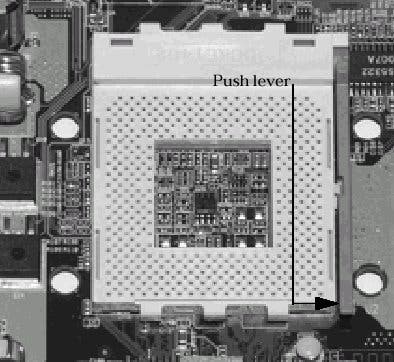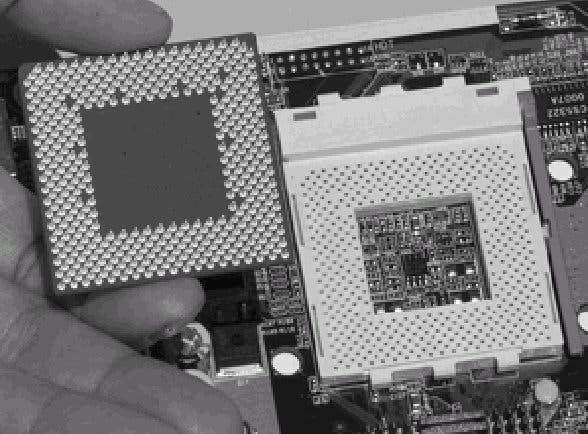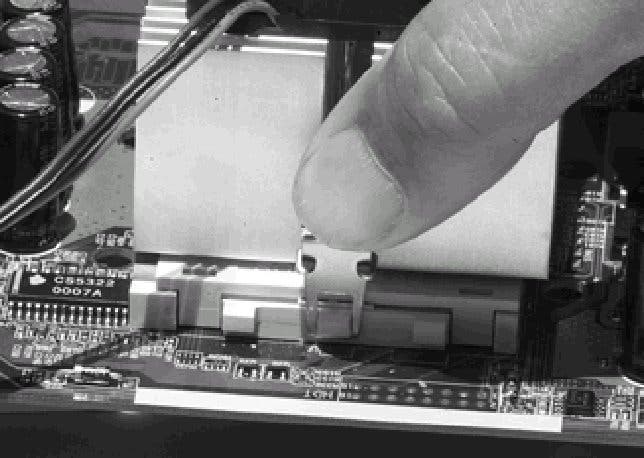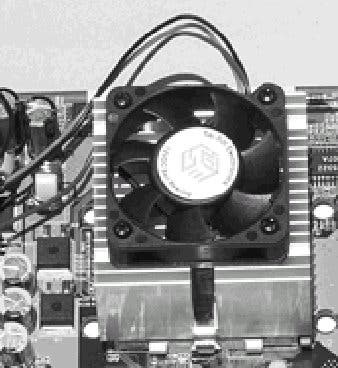AMD Athlon "Thunderbird"
This weekend we take a look at the pinnacle of processing excellence, the new AMD Athlon "Thunderbird". A CPU for the next generation of gamers perhaps?

Thunderbirds are go!
The definition of the "Speed Freak" is changing. Thanks to the AMD Athlon Thunderbird processors (or Athlons with "Performance-enhancing L2 cache memory" as AMD would have it) comes yet another doubling of the CPU speed threshold within a year. Why have AMD made this move to a new core though? The answer can be seen when broadly comparing the specs of its own line of Athlons from the past year. Throughout the series, spanning 500 to 1000MHz, the L2 cache divider was set so that the cache speed never rose above 350MHz, its peak, seen only in the 700MHz variant with its 1/2 divider. With the later Athlons, the performance deficit between them and Intel's equivalent Pentium III chips (whose cache ran at full speed) was quite sizeable, and something needed to be done. With the advent of the Thunderbird core, AMD have tipped the balance back in their favour, introducing a chip capable of keeping up with even the hardiest PIII. The secret to the Thunderbird's success lies in its full-speed on-die L2 cache. Having the L2 cache on the die allows it to operate at the same frequency as the rest of the die, meaning that it runs at a ratio of 1 : 1 with the processor, ergo full-speed. The latency is greatly reduced, as the CPU is physically closer to it. The performance differential between the older K7 core Athlons and these newer Thunderbirds under certain conditions is staggering. The Thunderbird is being released at 750, 800, 850, 900, 950, 1000 and (most recently) 1100MHz frequencies, with more to come. The availability of the chips is paramount and although there were rumours of a shortage earlier this week, there's been no talk of it since, whilst Intel are left scrimping and scraping to get their 1GHz Pentium III off the ground. Currently it's in very short supply and at inexplicably steep prices, while the Thunderbird 1GHz (reviewed here) is priced reasonably and available readily.

Technically impressive
The 256Kb of L2 cache does wonders for the performance of the processor, but it's not the only change. The new Thunderbirds have now adopted what's known as the Socket A packaging. Instead of being produced as cartridges, which slot into connectors (with boards named appropriately Slot A), the new chips adopt a much smaller package, similar to Intel's "flip-chip". Because the cache is on-die there's no need for the hefty cartridge style, and as such the chip is much smaller, and clamped firmly by its 462 pins directly onto the motherboard, which uses a new chipset, the KX133. This is because the only chipset other than this, which officially supports the Thunderbird, is the AMD 750, or Irongate. I can confirm this for myself, as my own K7V board has trouble with the Slot A Thunderbird I managed to track down through OEMs. The newer K7V-T seems to be the way forward if you would rather stick to the Slot packaging, but for the most part moving over to a Socket board is more future-proofed from the buyer's perspective. Physically the actual die of the chip is much smaller, with a 0.18micron fabrication process, although the presence of the cache on-die increases the size some 20% over the most recent non-Thunderbird 0.18micron Athlons. The transistor count is greater too, with some 37 million transistors, compared to 22 million in the original Athlon. Obviously such a large amount of transistor switching creates a lot of heat, and this must be channelled away. One of the areas that some people have reportedly encountered trouble with is third-party heatsink and fan combinations that don't clamp down correctly onto the Thunderbird. As such it's very important to make a proper thermal contact between the core and the heatsink, as the core will burn up after seven seconds without adequate cooling. One of the reasons it appears hard to clamp the heatsink on correctly is the four pads (one in each corner) of the Socket A chips. As proven by the new Taisol and Chrome Orb coolers though, it's perfectly possible to cool the chip without worry. A little bit of messing around with thermal grease will help, but for the most part the process is painless.

Real-world benefits
The actual benefit of adding full-speed on-die L2 cache is specific to certain applications, but its other main purpose is to allow the Athlon to reach much higher clock speeds. At high clock speeds the 2/5 cache divider of the older Athlons meant it could be running at only 300-340MHz, and the Athlon won't be getting much help from that at its highest frequencies. The lower latency is also very important for those applications that make use of the L2 cache. Obviously there's a bit of a puzzle as the older K7 core Athlons used 512Kb off-die (usually just referred to as external) L2 cache - surely the higher numbers are more important than the positioning? As it happens having 256Kb closer to the core reaps larger benefits. Certain situations (such as database crunching servers) may call more readily for the external 512Kb, but on the whole the Thunderbird is preferable for the above reasons. If you've read AMD's press release about the Thunderbird you may be puzzled by their insistence that the chip has 384Kb of cache. In reality this is split up into the L2 cache and 128Kb of L1 cache. The main reason that this is news is that unlike Intel whose CopperMine processors use an inclusive caching system (where all of the data within the L1 cache is duplicated in the L2 cache), AMD have opted for an exclusive caching system for the Thunderbird, where the L1 data isn't duplicated, so when AMD say they have a total of 384Kb of on-die cache, that's the truth of it.

Fabrication processes
Possibly the biggest news about the Thunderbird prior to its launch was the news that it would operate with the use of copper interconnects rather than Aluminium (or Aluminum to our American friends). However it's been mooted since then that the Thunderbird will be fabricated using both types, since it's not specifically important for the Thunderbird to be produced with a copper process. The burden has therefore been split equally between AMD's plants in Austin, Texas and Dresden, Germany. The latter will be responsible for the copper process. The question of difference in performance is still only loosely documented, but since a processor from either plant would operate at the same core voltage, their temperatures will be very close to one another. For AMD, the move to copper interconnects will help to let them work more efficiently at higher clock speeds, but lets save that for another article. The bottom line from AMD's perspective on the subject is that it's a future-proofed move toward higher clock processes. It will help them in the long run. In the meantime, all other CPUs (based on the Aluminium process) will be manufactured in Austin, Texas, and that includes the new Durons.
The test process
The Socket A Athlon 1000MHz AMD provided us for review gave us a few problems at first, although these were tracked down to the motherboard, and a replacement was quickly despatched to us. Ironically neither board was terribly user friendly. The first, a Gigabyte 7ZM (a Micro-ATX solution) was dead on arrival, although it looked fairly sturdy, whilst the MSI 6340 gave us problems with PCI devices, ignoring them. To this day we haven't tracked down the problem. Nevertheless, the Thunderbird itself was a stunner. Installation of Windows 98 was the fastest I've encountered, and the boot-up process took a mere 20 seconds. Yes, that's 20 seconds. Although this is with a bare bones system (MSI 6340, Athlon 1000MHz, 128Mb Crucial RAM running at CAS2, 3d Prophet II GTS graphics card) the speed is astounding. Installing all our favourite apps produced some simply stunning results. The 3d Mark 2000 program used the world over to benchmark systems produced a score of some 7500, possibly the highest score I've ever encountered. While 3d Mark is considered a very synthetic benchmark (in other words it's only good for comparing like for like), the score drummed up enthusiasm. Quake III is our benchmark of choice at EuroGamer however, and as such it was the main focus..
Benchmarks
: the low-end
: the other extreme
As you can see we tried to encompass both ends of the performance settings ladder with these tests. The lower resolution tests are quite interesting, as the Thunderbird sticks its head out marginally in front. Although perhaps it would do so further with a better motherboard chipset. At the higher resolutions the GeForce 2 GTS is the limiting factor. Although the Athlon is ahead on paper by a slither, it's really going to be some time (not until the GeForce 2 Ultra and Voodoo5 6000 hit store shelves in fact) until these processors can be used to their full potential at this high-resolution setting.
Conclusions
At this stage the performance against other leading processors is about right - on the level, if you like. The L2 cache being on-die is a significant factor in keeping the performance at such a competitive level, and AMD have definitely achieved success in holding off Intel for the moment. Many may turn around and talk about Intel's new Williamette (or P4 as it's officially known) and its performance against the Thunderbird, but the truth of the matter is the Thunderbird is here to compete against the CopperMine, and it's won that war. An interesting point about the Williamette argument though, is that considering the extremely hefty pricetag that will be attached to it, and the limitations due to graphics cards in gaming that we are already seeing, it may be hard for anyone to justify the upgrade, no matter how much the performance increase. After all, the price will be very steep and for gamers at least, there may seem little point. Intel may have trouble marketing the Williamette, as it will inevitably be pitted against Thunderbirds (which will be in the upper echelons of the 1300s by then I should imagine). AMD have recently announced their 64-bit processor, and in the current climate Intel may find themselves at the mercy of the general public for mistiming their CPU launch. Stealthy marketing tactics will be abound, but for the moment at least, thanks to its high level of performance at a competitive price, the Thunderbird CPU is the processor of choice for real gamers. Coupled with the new ABit KT7-RAID or ASUS A7V, you can't really go wrong.

